Patriot Viper III Review: 2x4 GB at DDR3-2400 C10-12-12 1.65 V
by Ian Cutress on November 18, 2013 1:00 PM EST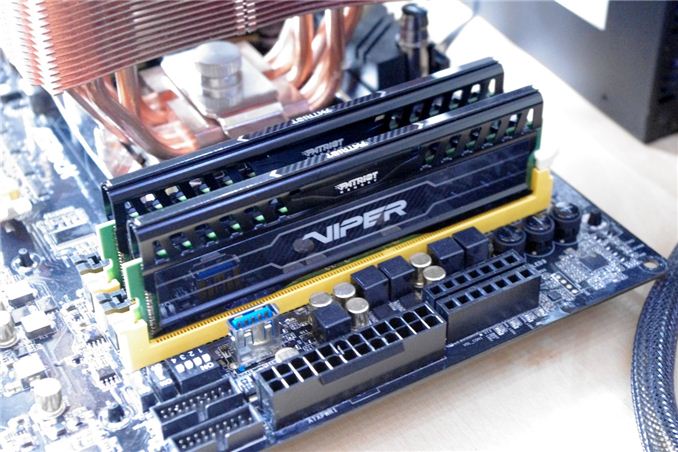
Perhaps I am out of the loop, but in recent CPU generations of PC building, Patriot Memory has not featured much on my radar. A quick look at their product range tells a tale: the fastest DDR3 kits are 2400 MHz, and by comparison to some other memory manufacturers, their presence at Computex was somewhat discreet. Nevertheless, when I got in contact for our series of quick fire Haswell memory reviews, Patriot were keen to sample a couple of their 2x4 GB Viper III kits of DDR3-2400 C10 1.65V.
Patriot Viper III 2x4 GB DDR3-2400 C10 Overview
With mainstream computing platforms all focused on dual channel memory, we are still in the realm where two sticks of DRAM in a kit is the norm. Modern OSes are eating varying amounts of memory, and the more computing power people have access to, the ‘lazier’ programmers and users can be with their memory allocation. For casual desktop users on a Windows based platform, 4 GB can easily be enough: gamers and power users can look at 8 GB and be happy, while power users/enthusiasts/multi-GPU gamers will desire a 16 GB kit minimum. Only specific niche targets will aim for more, for which there are still a numerate selection of choices to consider.
But for most builders, an 8 GB kit still hits a nice balance between ‘enough memory’ and cost. The kit Patriot have sent us for review is not actually on Newegg right now – the nearest to the PV38G240C0K model is actually the PV38G240C1K variant, a 2400 C11 kit, which retails for $92. On Amazon.com the PV38G240C0K kit is actually $117, although on NCIX it retails for CAD$100. Because Patriot sent us two 2400 C10 kits to test, we tested a kit as it comes and both kits together, although this is not a recommended scenario (see later).
In terms of overclocking, this memory kit starts with an initial Performance Index of 240, and with nothing more than a small bump in voltage and a memory strap adjustment, we see 2666 10-12-12, giving a PI of 267. Adjusting through various CL values confirmed that a PI of 267 is the best result for a 24/7 stable system, valid up to 2666 C10. Beyond C10 the system refused to be stable above 2666 MHz, thus lowering the PI.
Specifications
| ADATA | Corsair | Patriot | ADATA | G.Skill | ||
| Speed | 1600 | 2400 | 2400 | 2400 | 2800 | 3000 |
| ST | 9-11-9-27 | 11-13-13-35 | 10-12-12-31 | 10-12-12-31 | 12-14-14-36 | 12-14-14-35 |
|
Price (at review) |
- | $200 | - | $117 | $316 | $520 |
| XMP | - | Yes | Yes | Yes | Yes | Yes |
| Size | 2 x 8GB | 2 x 8GB | 2 x 8GB | 2 x 4GB | 2 x 8GB | 2 x 4GB |
| PI | 178 | 218 | 240 | 240 | 233 | 250 |
|
|
||||||
| MHz | 1600 | 2400 | 2400 | 2400 | 2800 | 3000 |
| Voltage | 1.35 V | 1.65 V | 1.65 V | 1.65 V | 1.65 V | 1.65 V |
| tCL | 9 | 11 | 10 | 10 | 12 | 12 |
| tRD | 11 | 13 | 12 | 12 | 14 | 14 |
| tRP | 9 | 13 | 12 | 12 | 14 | 14 |
| tRAS | 27 | 35 | 31 | 31 | 36 | 31 |
| tRC | 46 | 43 | 49 | |||
| tWR | 20 | 16 | 16 | |||
| tRRD | 315 | 301 | 391 | |||
| tRFC | 6 | 7 | 7 | |||
| tWTR | 10 | 10 | 12 | |||
| tRTP | 10 | 10 | 12 | |||
| tFAW | 33 | 26 | 29 | |||
| CR | 2 | 3 | 2 | |||
Compared to the ADATA 2400 C11 we reviewed last time, most of the secondary sub-timings are smaller (tRC, tWR, tRRD, tFAW) - some of this will be due to the lower density (2x4 GB vs 2x8GB) memory. The amazing thing is that our XMP detection showed a command rate of 3T for the Patriot memory, although this was reported as 2T in the operating system.
Visual Inspection
In terms of the kits we have in to test, Patriot and Corsair are doing similar packaging paradigms: a cardboard outer shell that is sealed, and an easy to open plastic insert to hold the memory stable in transit.
The heatsink extends an extra 12mm (0.47 inches) above the memory PCB, giving a total heatsink height of 36mm.
Buying the Correct Memory Kit
For this review, we have done two sets of numbers: one with one kit of the Patriot 2400 C10 memory, and another with two kits put in the same system. Despite this testing, it is not a recommended scenario: do not buy two memory kits, even if they are the same model, and expect them to work together. There are many, many forum posts with users having two of the same memory kits in a system and it not working. I have even been a victim at one point to this scenario.
There are several factors at work:
- When you buy a memory kit, it is not only designed to work at the rated speed, but in the rated configuration only. There is no guarantee it will work in a larger memory configuration.
- While each memory kit may be labelled the same, they can be different, especially when it comes to overclocking.
- More often than not, memory timings are very aggressive, meaning for two kits to work together, memory timings have to be weakened.
- The only time it will work is if the two memory kits have lots of overhead, and if the CPU memory controller can handle it.
Rule of thumb: if you want 16GB/32GB/64GB of memory, buy a 16GB/32GB/64GB kit. If it works out it costs more, that is because the kit is fully validated in that configuration.


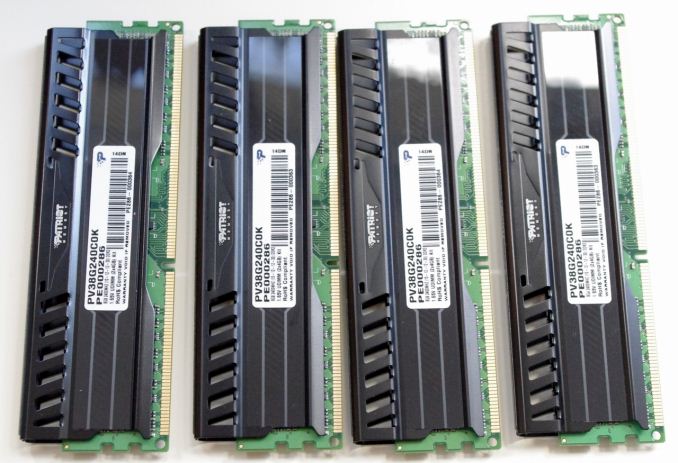
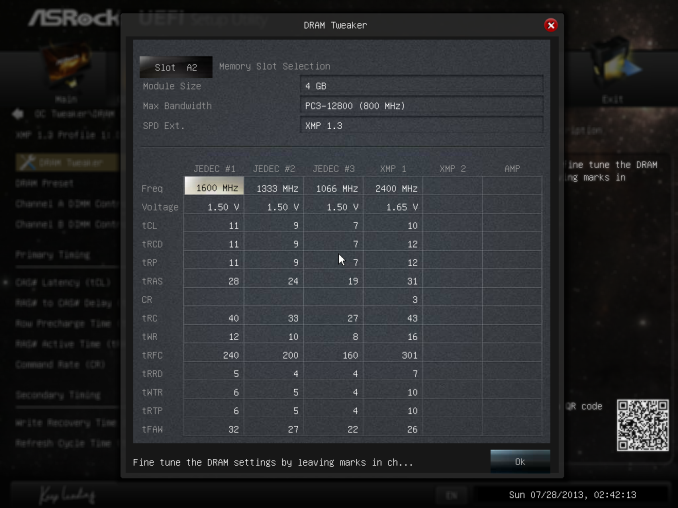
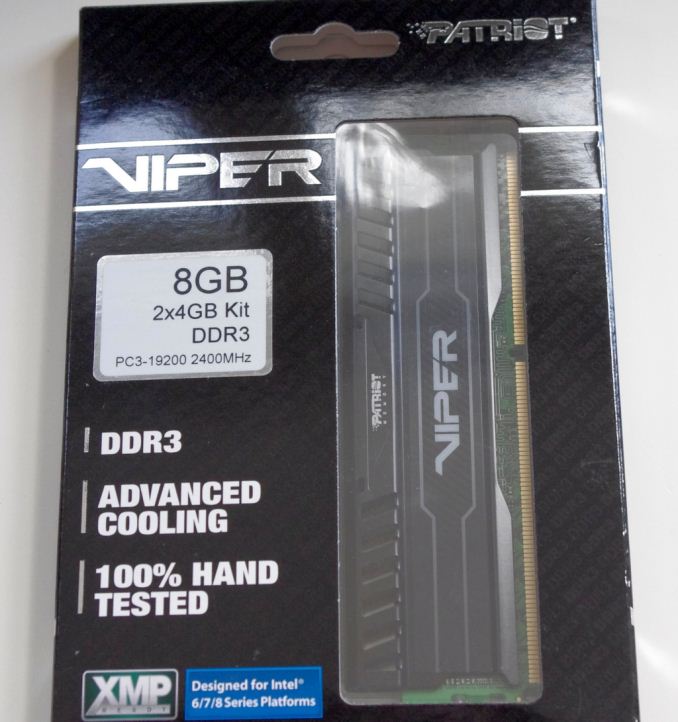
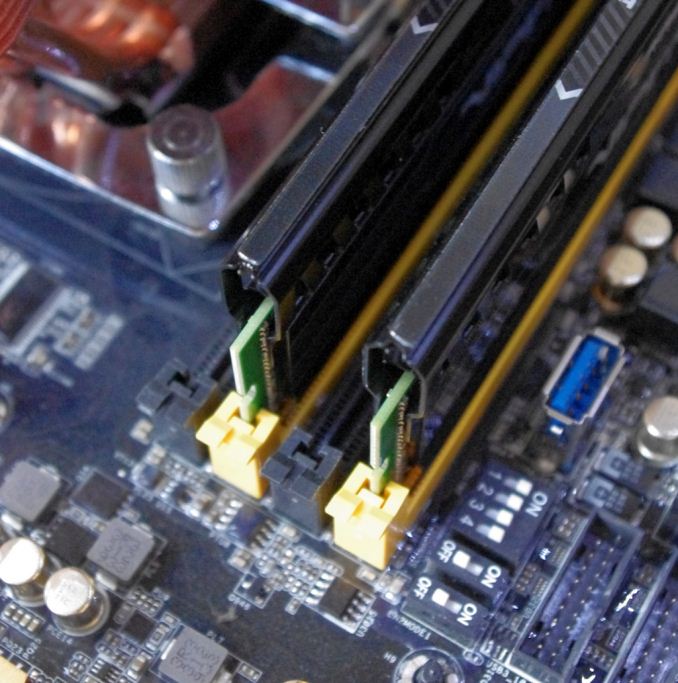

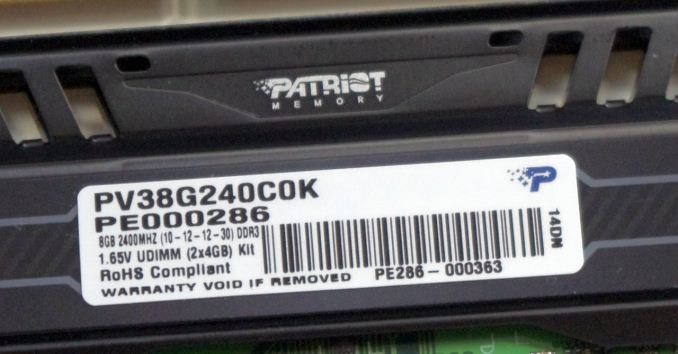














48 Comments
View All Comments
chekk42 - Tuesday, November 19, 2013 - link
No, I wasn't expecting 2400 to come in CL7, but thanks for the assistance. My point is really that kits which qualify as low latency like many of those in your list, seem to be in very short supply and/or very expensive today. I don't think this was the case a couple years ago when there was higher availability.Gen-An - Tuesday, November 19, 2013 - link
The ICs that could run at those latencies comfortably have long since been discontinued. They were mostly 1Gbit chips (128MB) made by Elpida and Powerchips, so the biggest sticks you could get out of them were 2GB. Most memory these days are 4GB and 8GB sticks and the ICs used can't run low latencies at speeds of 1600.djscrew - Tuesday, November 19, 2013 - link
RAM reviews seem more and more pointless by the day.Dustin Sklavos - Tuesday, November 19, 2013 - link
Honestly I thought that for a long time, too. But Ian's work is extremely technical and thorough, and once you get into the intricacies of it, there's a lot to learn. I've been spending a lot of time delving into the effects of high speed memory and while 90% of the time it's not important, those weird 10% corner cases can be very compelling.Playing around with memory can be very interesting in general, and a lot of users swear by high speed memory because it just *seems* smoother. Every build and every system is essentially a game of moving bottlenecks around, and there's some value in being able to take memory speed out of that equation.
mfenn - Tuesday, November 19, 2013 - link
And yet the charts show that there is no difference for most use cases. Good data is a great thing to have. However, you shouldn't throw that data out the window and make conclusions based on emotions like you've done in your second paragraph. (Ian is just as guilty of this, so you're in good company.)Gen-An - Tuesday, November 19, 2013 - link
I don't know why people just don't accept that there is a market for high speed RAM kits that often has very little to do with 24/7 "real world" usage and move on if it doesn't interest them.Ewram - Tuesday, November 19, 2013 - link
I would have liked an AMD example on IGP performance as well, but oh well...Ewram - Tuesday, November 19, 2013 - link
Forgot to finish my post with: Great review anyway!johnnyfoxes - Tuesday, November 19, 2013 - link
This seems like a pretty good option. I've been a custom builder for the last years and I have always thought that it's really painful to keep track of all the different components. I've tried a couple of different solutions like Evernote, but started using a new startup called Unioncy the other day. Found it quite helpful since they track warranties for you. Might be worth a try if you are building a lot like me.Hairs_ - Tuesday, November 19, 2013 - link
While this review is technically interesting up to a point, it reinforces a view I've had of the tech press for a while now: there is far too much attention on high end halo products which have norelevance to most buyers. In this case, it appears we're embarking on a review of massively expensive options for ram when the existing tests show absolutely no performance difference whatsoever between these high priced kits and ddr3 1333 ones. Triple the price for an extra 1fps? Recommended!Any idiot spending hundreds of dollars on ram can afford to replace what he doesn't like. Where are the reviews of budget motherboards, ram kits, processors? The only people who really need to know what the latest $700 processor running on a $400 motherboard with $200 of ram and a $600 graphics card can do can afford to replace what they think isn't good enough and are probably upgrading every 6 months anyway.
You know who *needs* reviews? The guy replacing a $5-600 build from 3 or 4 years ago with the same price, and is faced with hundreds of choices. He can't afford to buy the wrong part and the parts he's choosing from are far more superficially varied and difficult to evaluate.
Needless to say, if you want to find out if $500 card x is significantly faster than $500 card y from 6 months ago, a hundred sites will tell you. Comparing a $100 processor? nope.
The graphs in this article and the last one tell us all we need to know about high end memory: it makes no difference. Please move on!